Tuesday – February 12, 2019
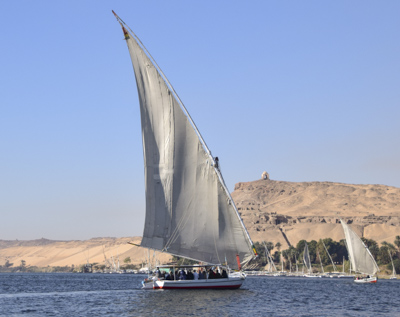
Today was our day to sail on a felucca across the Nile to the Botanical Garden on Kitchener’s Island. The basic structure of the felucca hasn’t changed since the time of the Pharaohs. They are heavy wooden open-deck boats complete with canvas shelters to block out the searing desert sun. Made for sailing over shallow waters, feluccas don’t have a stationary keel, instead they have a center plate that can be raised over sandbars or low depths.
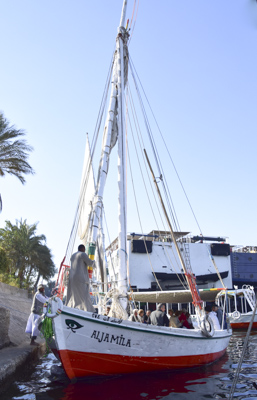
There’s no motor on a felucca, so one of the two-man crew members lowers the heavy canvas sail and they sail into the dock. After the group boarded our felucca, a man on land pushed the bow of the boat out into the river. The current took the boat downstream a bit while one man untied the heavy hemp ropes. Then the other man joined him to hoist the heavy sail. Notice they’re both barefooted:


What a treat! It was a crystal clear day with a fresh cool breeze. Perfect for a sail on the Nile. As the wind filled the sail, one of the men walked aft to steer with the huge tiller.
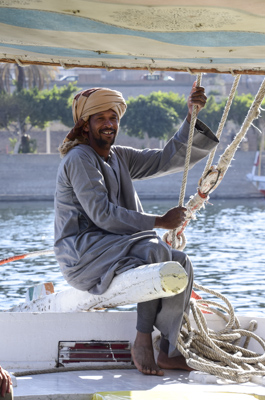
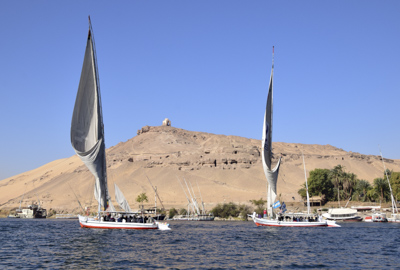
After sailing for a while, one of the crew took out a drum and began to play and sing Nubian folk songs. He taught us some words and we all clapped to the beat and joined in the chorus. Great fun!!


We arrived at El Nabatat Island aka Kitchener’s Island and said goodbye to the crew. I could have stayed on the felucca all day! The island was gifted to Lord Kitchener, the British Counsul-General in Egypt, when he served from 1911-1914.
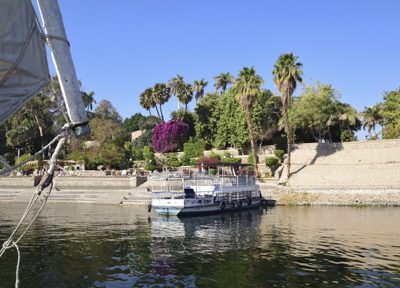
Kitchener transformed the small island into a paradise of exotic plants and trees from tropical places around the world. What a surprise! The garden was beautiful!

The island was later used as a government research station. Today, it is the Aswan Botanical Garden and enjoyed by local people and tourists.
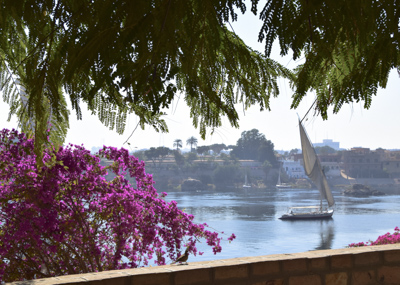
It was a lovely peaceful garden with rare trees and many chirping birds. A market of craftspeople and vendors was set up at the far end of the island.
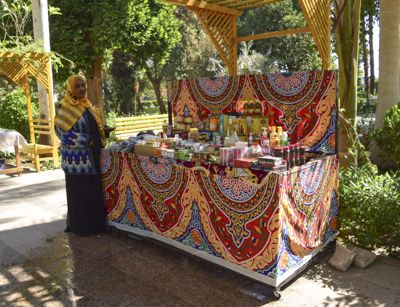
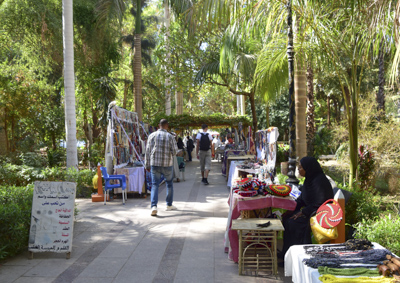
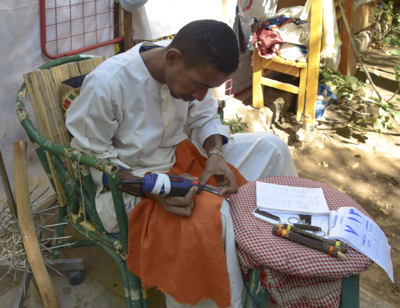
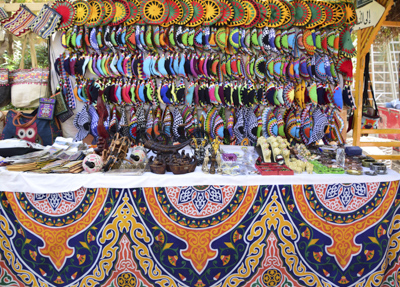
Below is a photo looking south from the Botanical Garden:

After we walked through the garden, we boarded a Nile River motorboat to cruise around Elephantine Island and explore the shallow parts of the cataract.


Elephantine Island is another island in the Nile River near the city of Aswan. The island’s name comes from either the shape of the island or from the large boulders along the banks which resemble elephants.
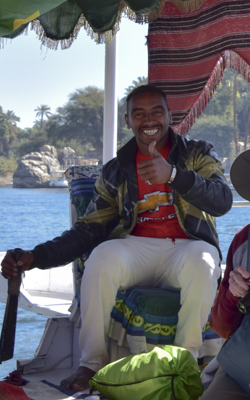
Scenes from the Nile River:
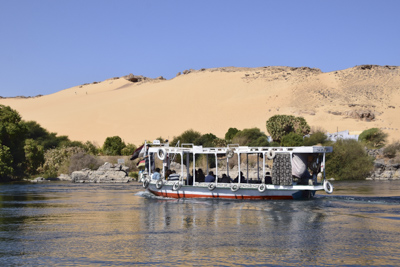

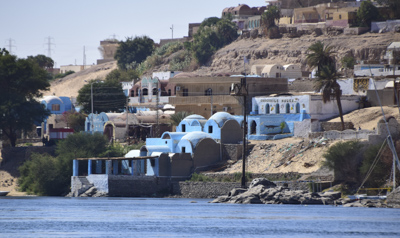
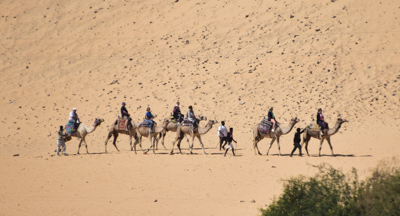
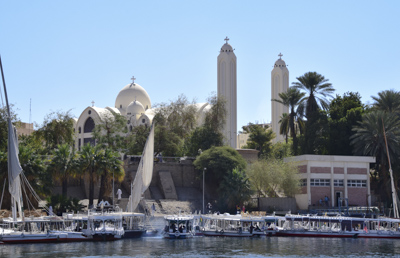
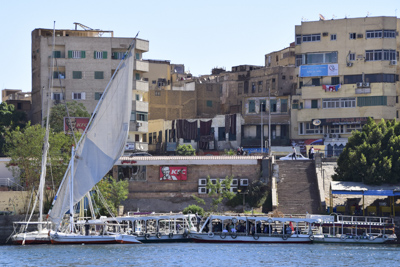
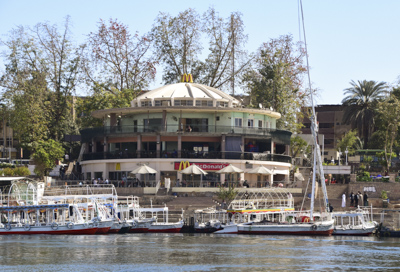
Two teen-age boys paddled up to our motorboat and sang a variety of songs in several languages: English, French,German, Spanish, etc. Entertaining and very enterprising!
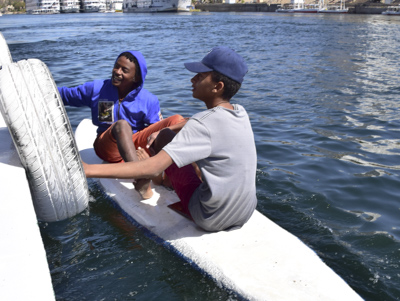
After a while, we returned to the Mojito and relaxed onboard while the crew prepared to cruise north back toward Kom Ombo.
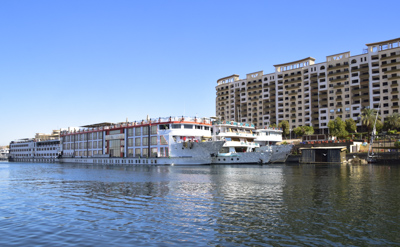
The sun was low in the western sky and we enjoyed the scenery along the river.


Kom Ombo is an agricultural village of approximately 60,000 people and the location of the Ptolemaic Temple of Kom Ombo. Built between 180 – 47 BC, it is unique because it honors two sets of gods. The southern half of the temple was dedicated to the crocodile god Sobek and the northern half honors the falcon god Haroeis, also known as Horus.

The Mojito slowly docked along the quay between two other riverboats. The sun was setting as we climbed the steps up to the Temple of Kom Ombo.
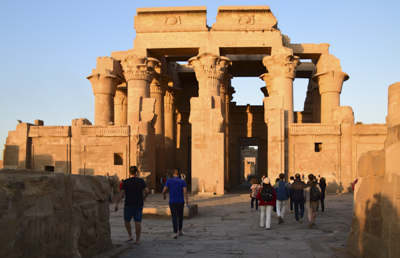
We took as many photos as we could in the warm fading light. Then joined our group to hear Maged, the tour leader, explain the important features of the temple.
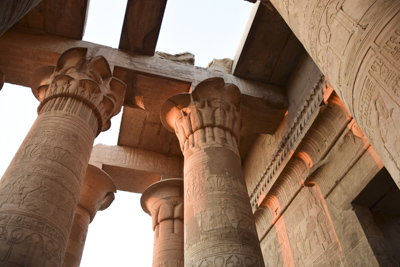

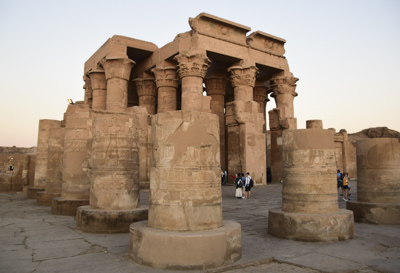
Kom Ombo Temple was an imposing site and the location above the river was superb. We had another incredible day on the River Nile. Aswan was a lovely international city with many interesting sights and activities. The ship had turned around and were cruising north back toward Luxor. Time was slipping away but we were having an unforgettable adventure!